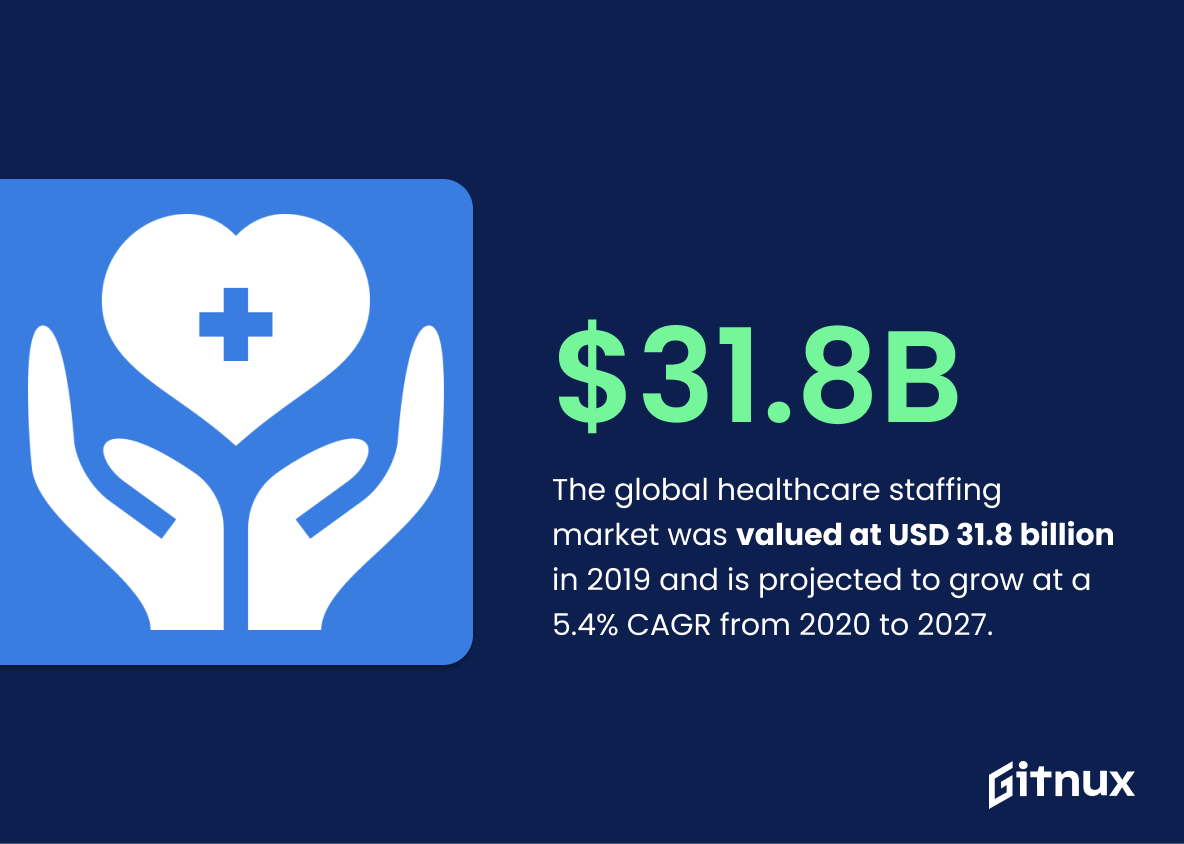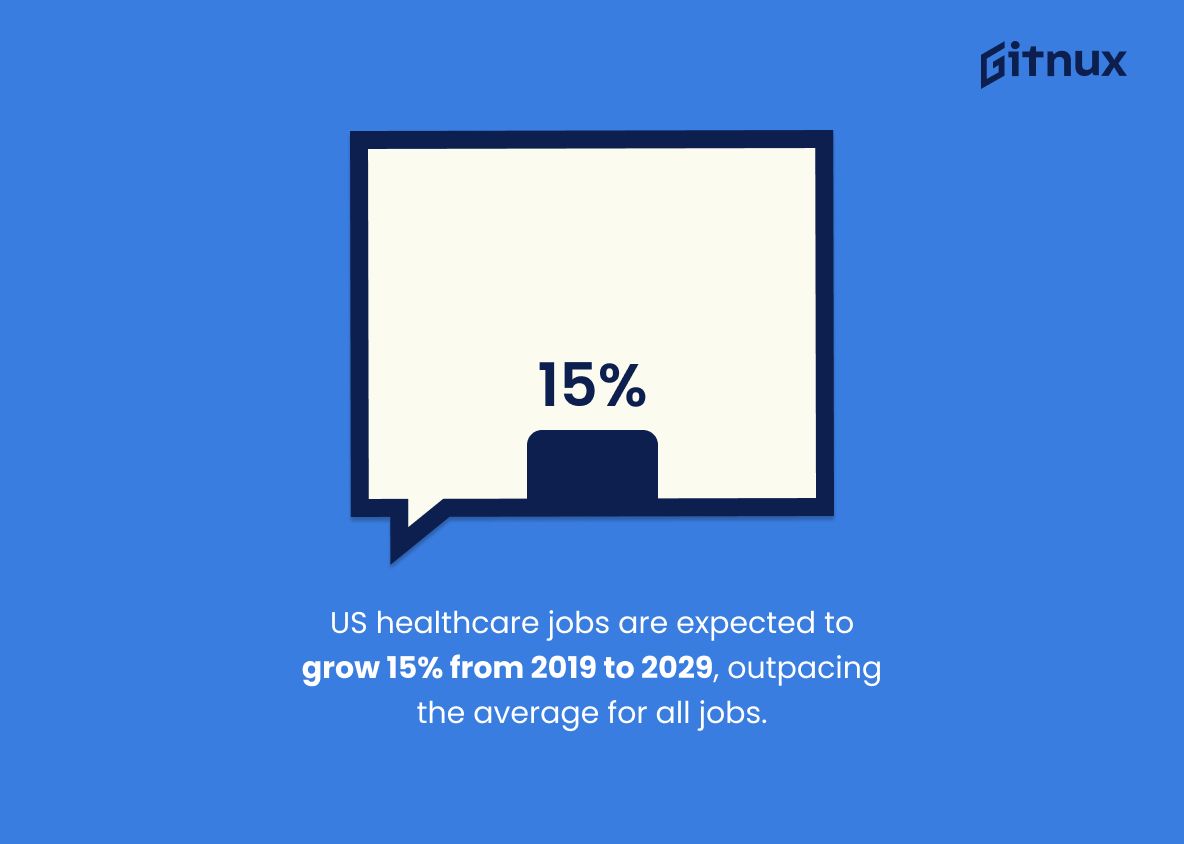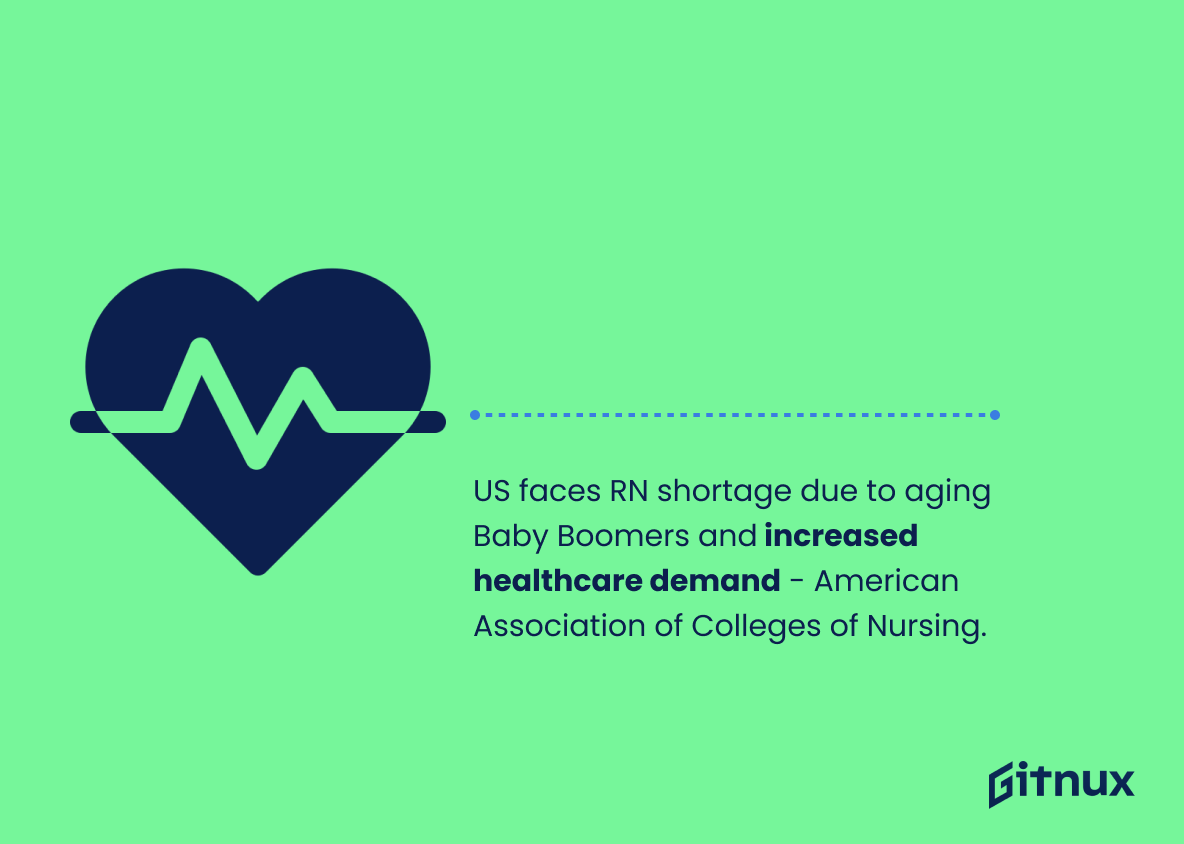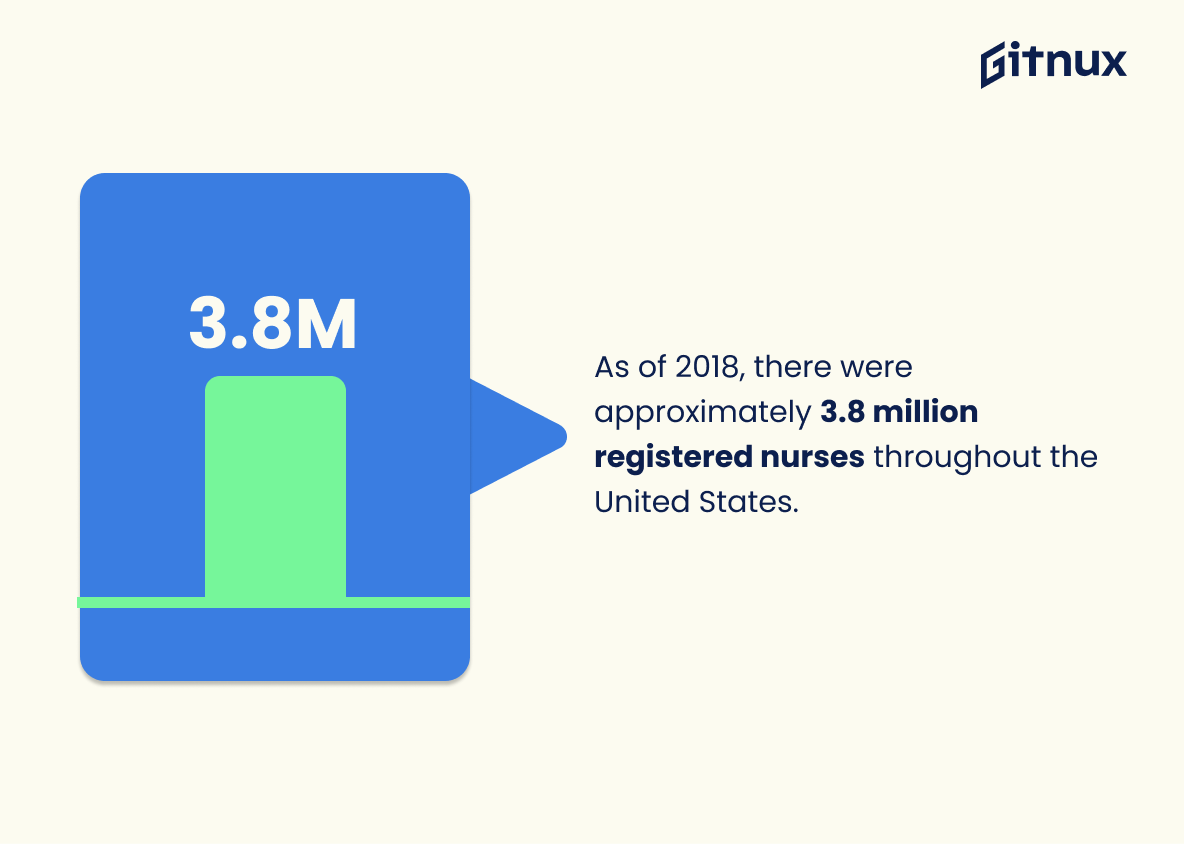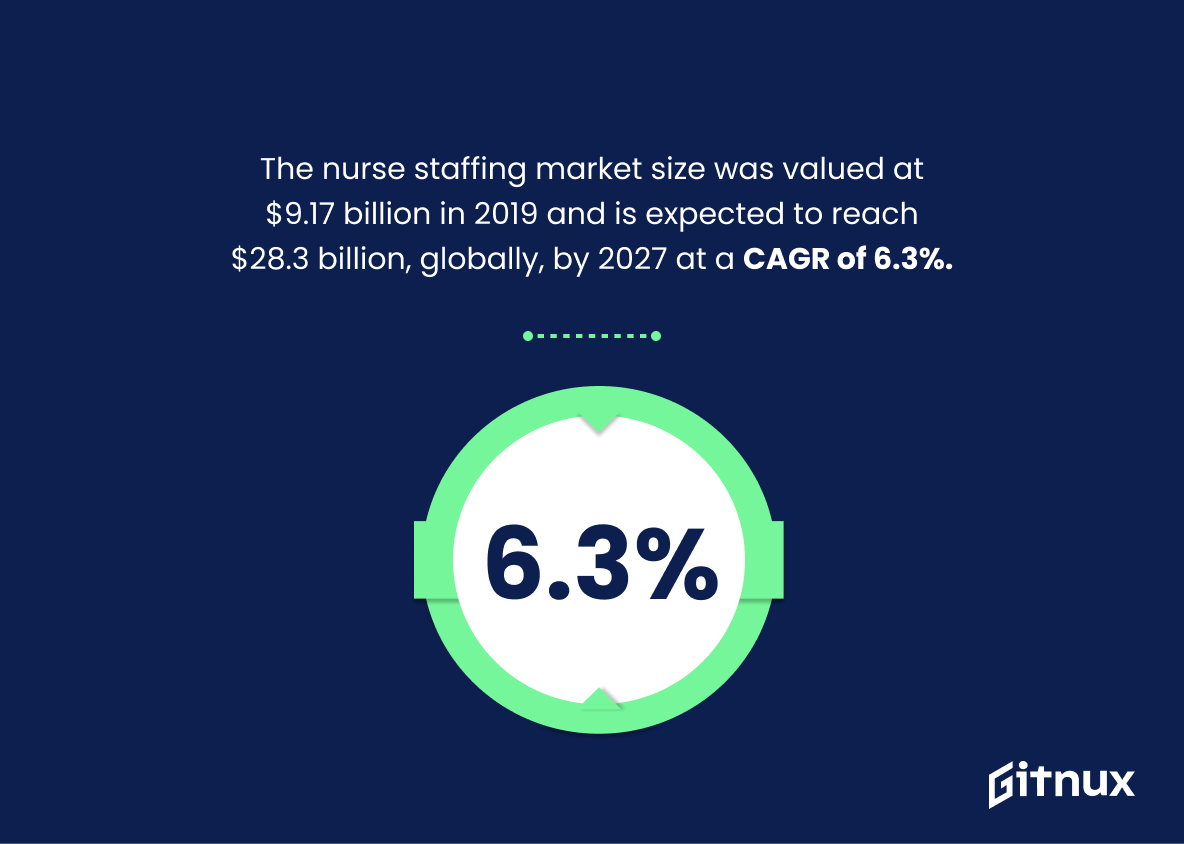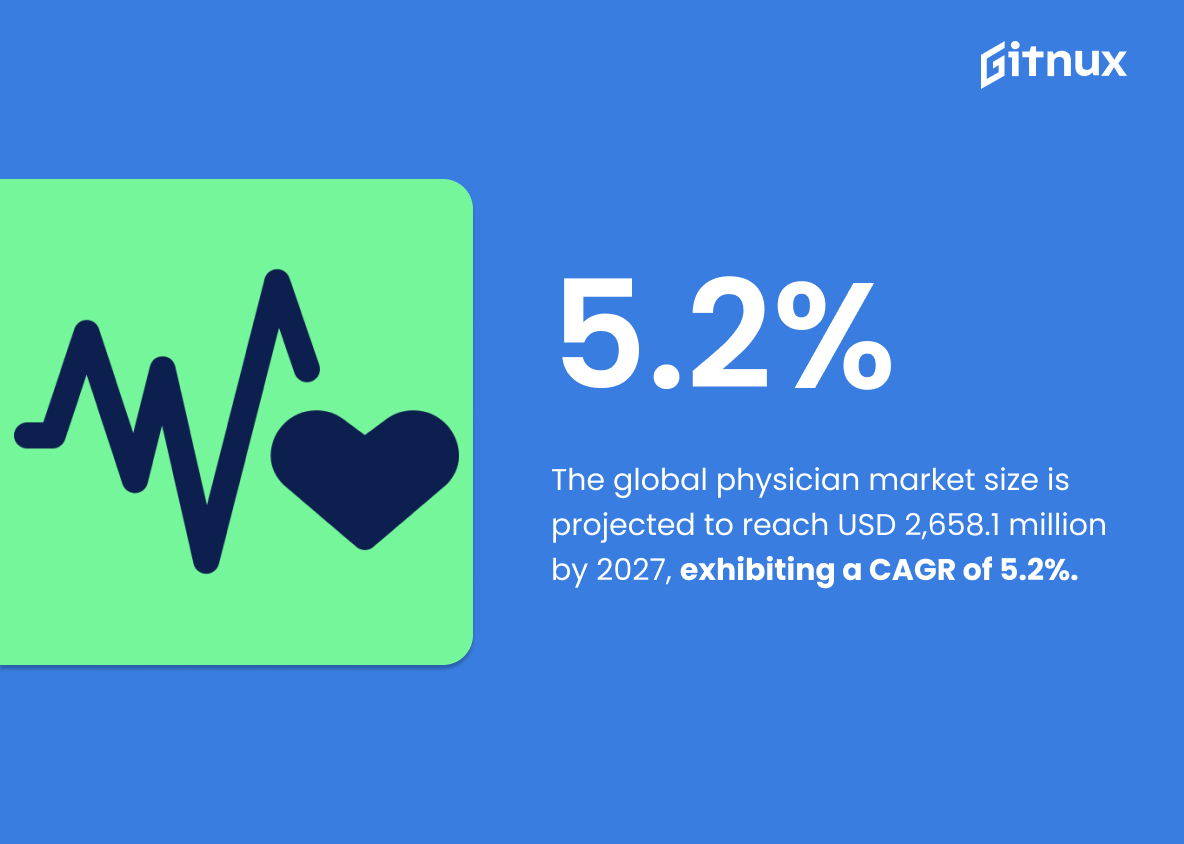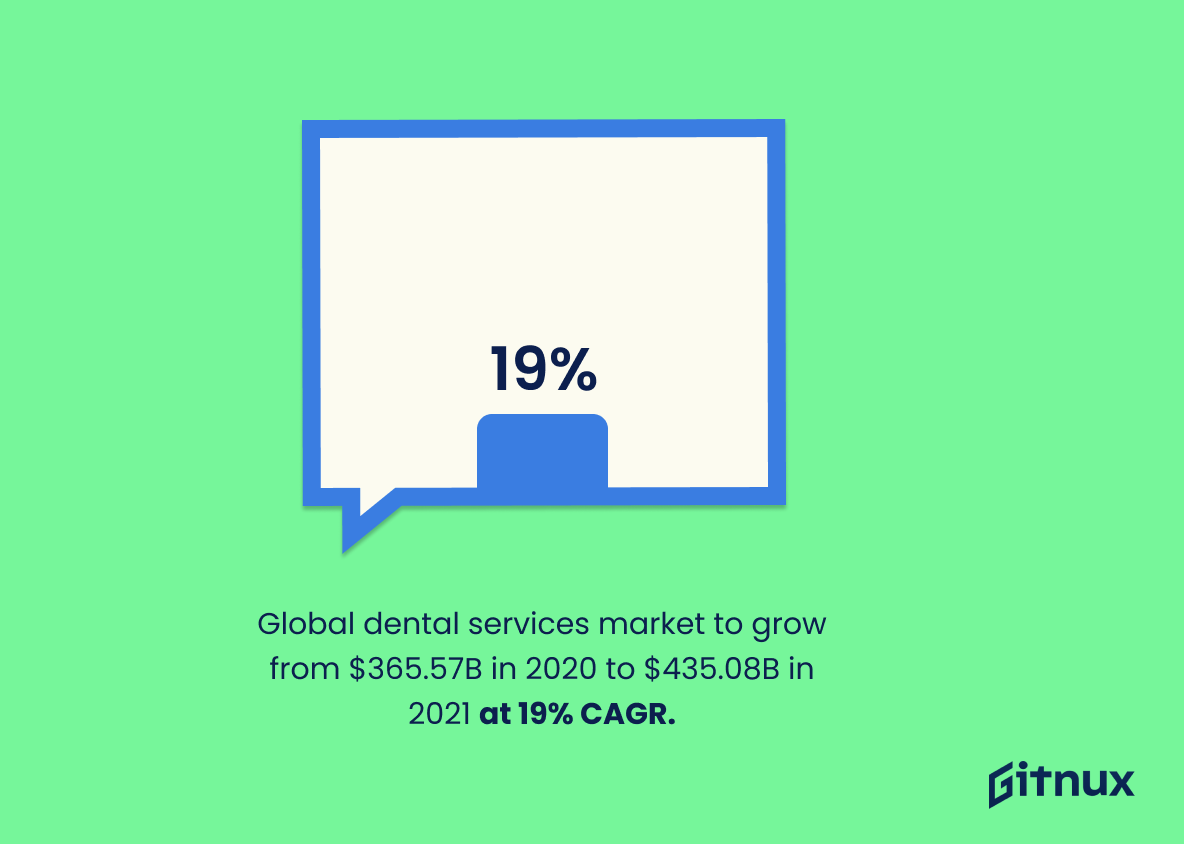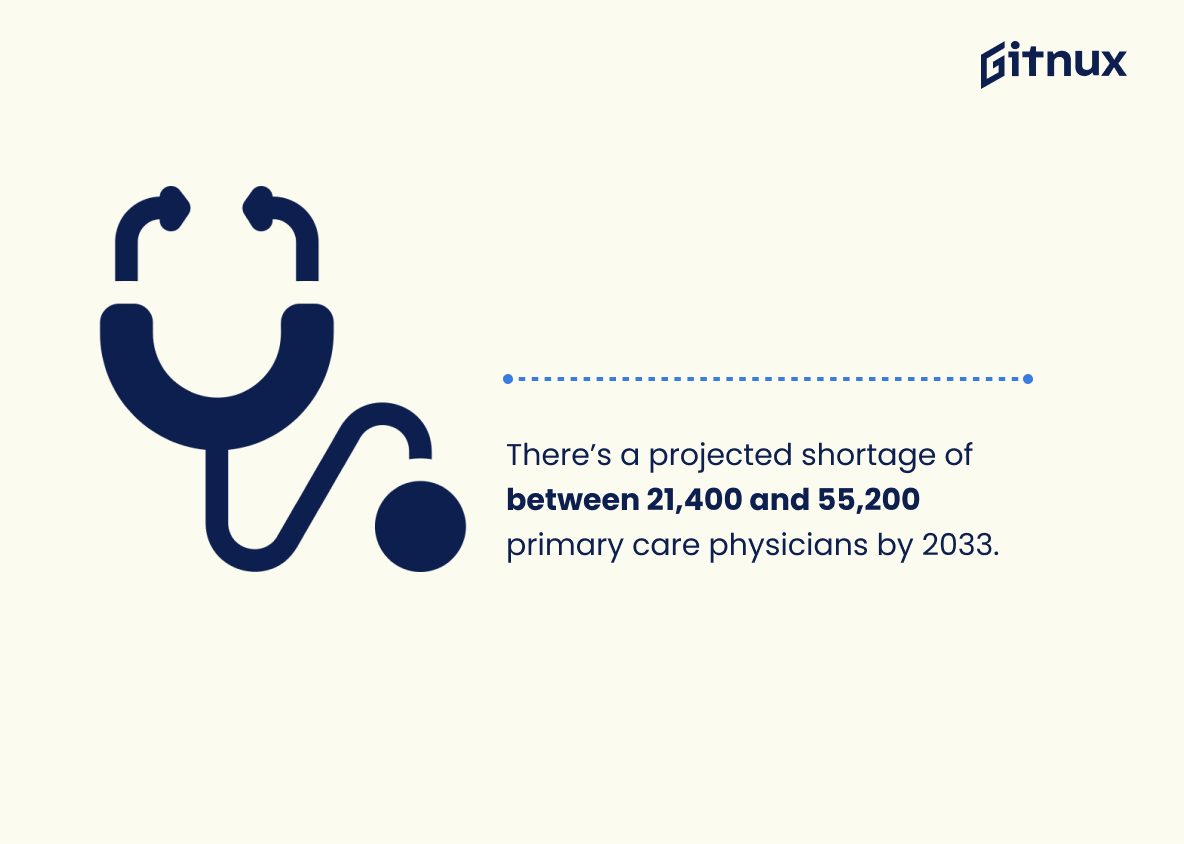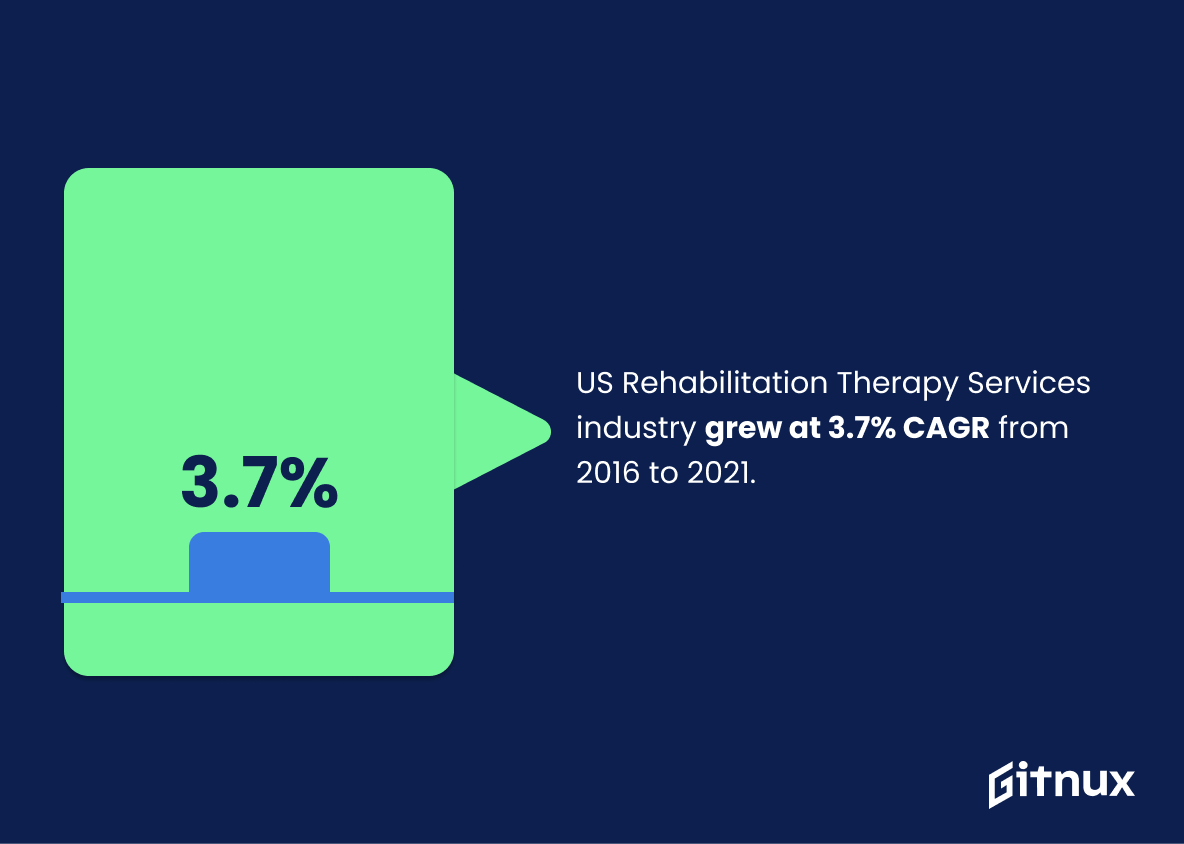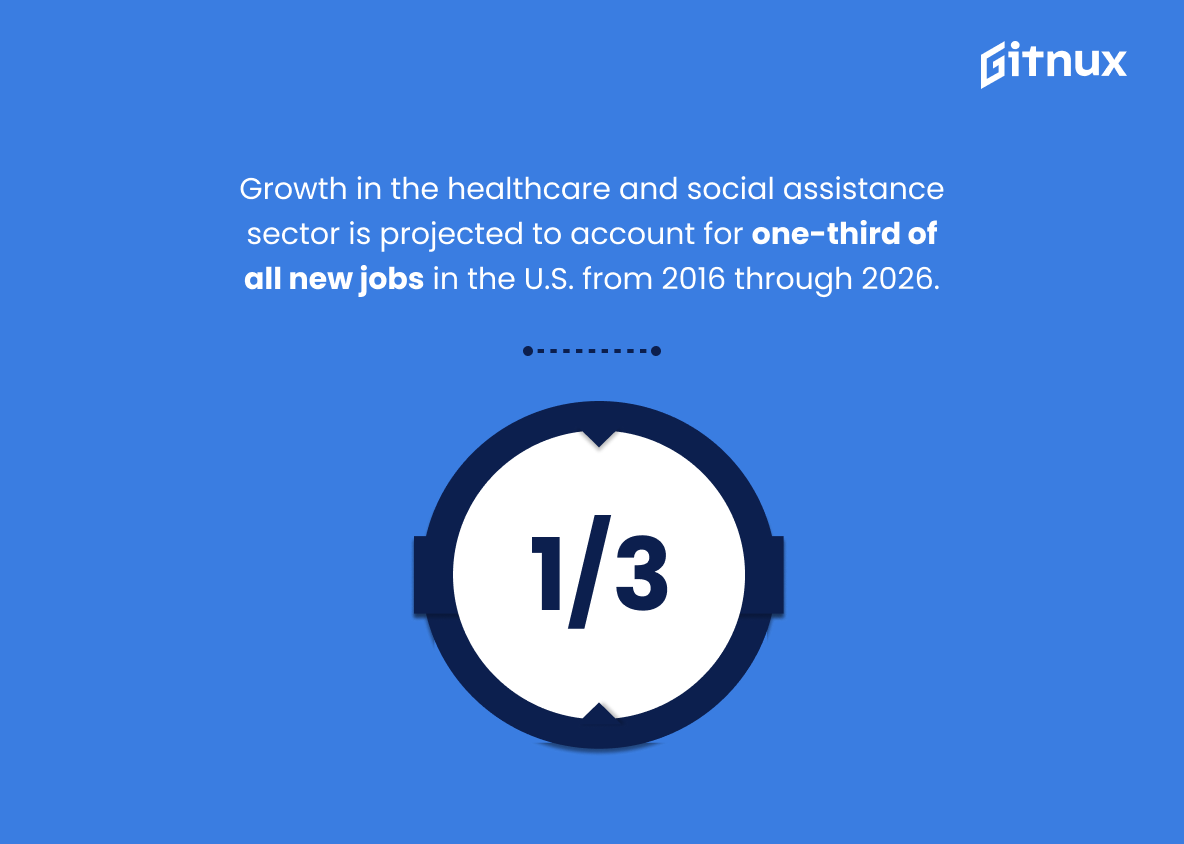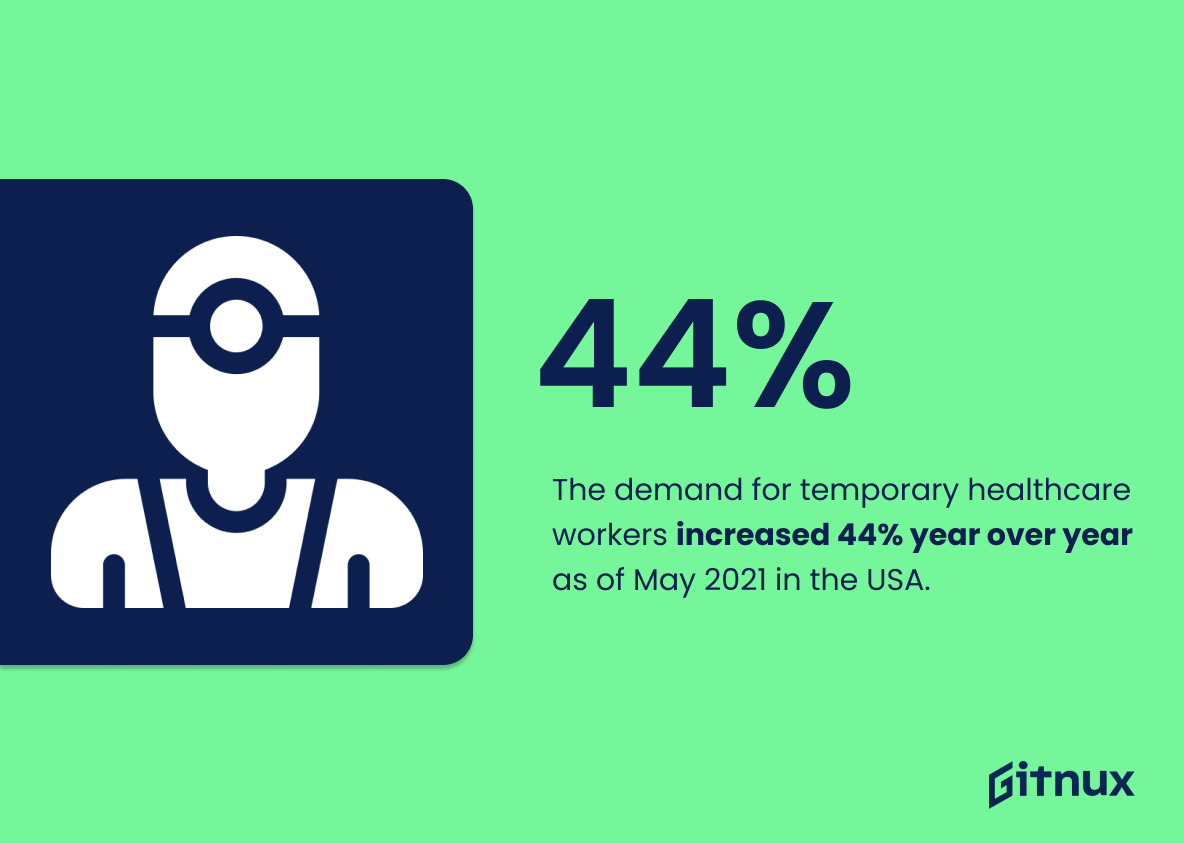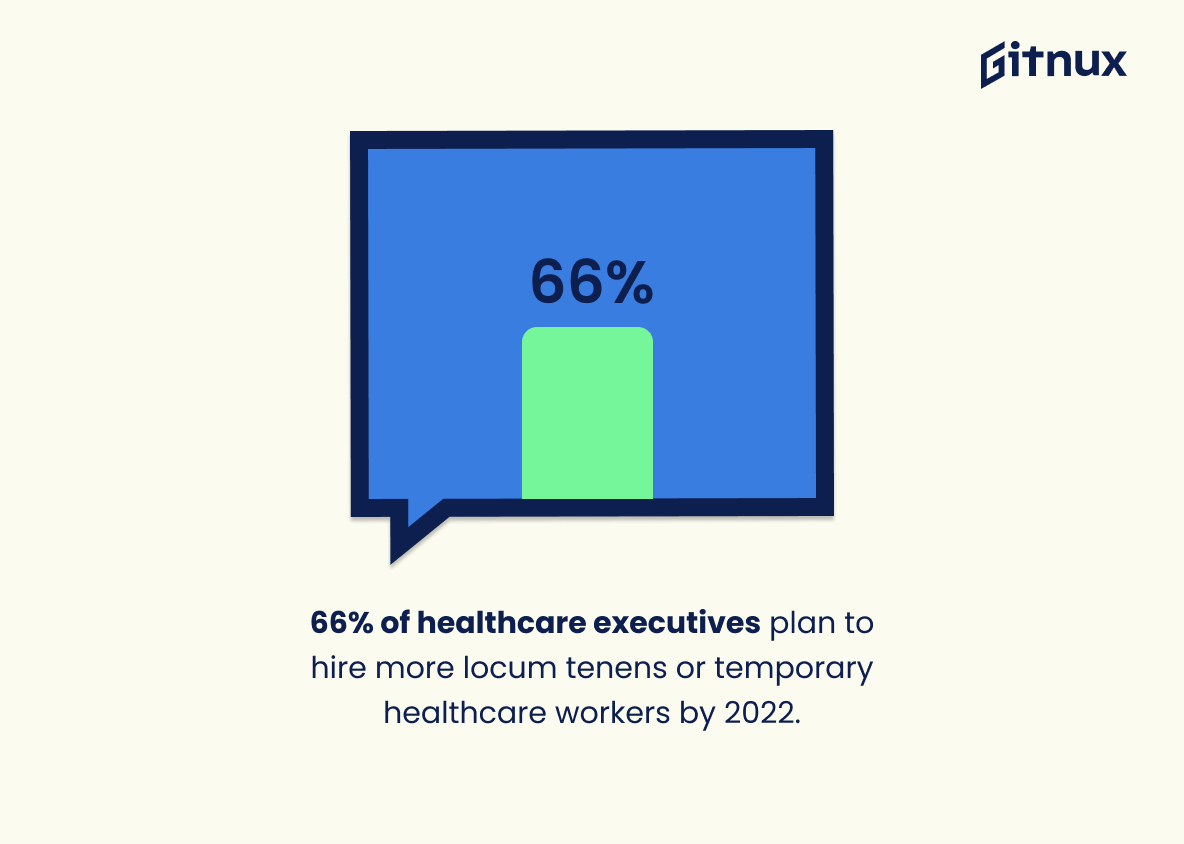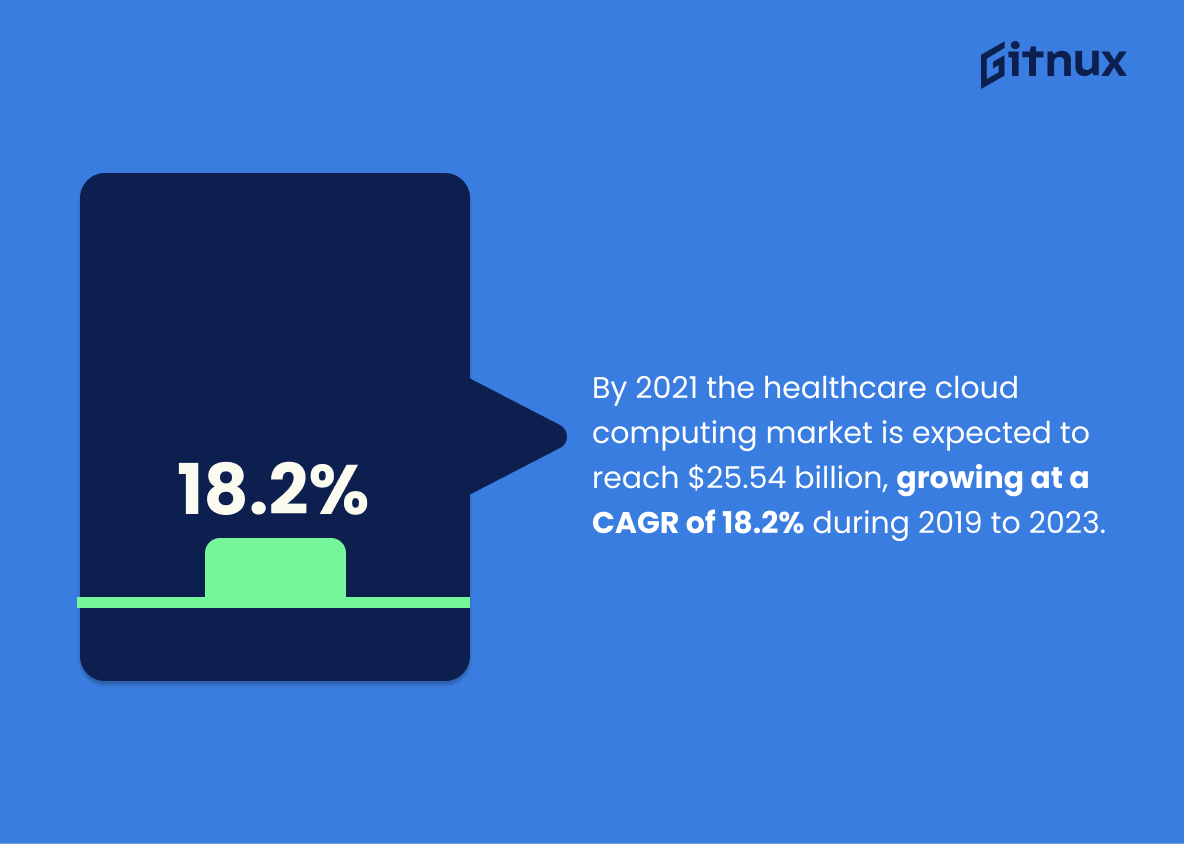In the ever-changing landscape of healthcare, understanding the dynamics behind staffing is vital, not only for those in the industry but for anyone depending on its services. This blog post delves into the beating heart of the healthcare sector – the staffing industry. In offering a comprehensive analysis of recent statistics, trends, and patterns, this post is designed to shed light on the intricacies of healthcare staffing.
We will explore the challenges faced, the growth projections, as well as the critical role these professionals play in the broader healthcare system. Backed with data, this deep dive into statistics will offer valuable insights in decoding the complex matrix of the healthcare staffing industry. Whether you’re a healthcare professional, a staffing agency, or a concerned citizen, this knowledge can be your guiding beacon in navigating the healthcare sector. Let’s dive in to demystify the numbers together.
The Latest Healthcare Staffing Industry Statistics Unveiled
The global healthcare staffing market size was valued at USD 31.8 billion in 2019 and is expected to grow at a compound annual growth rate (CAGR) of 5.4% from 2020 to 2027.
Diving straight into the heart of the matter, the global healthcare staffing market size, valued at USD 31.8 billion in 2019, is an undeniable testament to the industry’s enormous scale and remarkable economic significance. The anticipated compound annual growth rate of 5.4% from 2020 to 2027 augurs an upward trend that continues to play a pivotal role in shaping the healthcare sectors worldwide.
As we peel back the layers of this vibrant industry through this blog post, these numbers personify not just the business aspect, but echo the increasing demand for medical professionals, predicted market adaptations, future investment opportunities, and the unfolding influence of technology on healthcare staffing.
The U.S. Bureau of Labor Statistics projects healthcare occupations to grow by 15% from 2019 to 2029, much faster than the average for all occupations.
In the enthralling panorama of healthcare staffing industry statistics, the rapid growth prediction made by the U.S. Bureau of Labor Statistics stands as a striking beacon on a distant horizon. The predicted 15% growth in healthcare occupations from 2019 to 2029 doesn’t merely serve to captivate; it promises a future filled with possibilities, one that outpaces the average growth for all occupations.
In the heart of this trend, one can discern an unmistakable business opportunity. Those in the healthcare staffing industry can leverage this remarkable surge and capitalize on the growing need for professionals in the healthcare sector. This projection is a sign – a sign of an industry poised for rapid expansion and a sign of a nigh guaranteed profitable future.
Furthermore, from this statistic springs the necessity for effective strategic planning in the staffing industry. To meet the demand, there will be an imperative need for businesses to be prepared, to fill in the gaps, and to ensure that the various healthcare jobs are filled by qualified individuals. Equipped with this knowledge, these businesses stand before a fertile landscape, ready for seeds of innovation and growth.
Thus, the projected 15% growth seizes the spotlight, inviting exploration, analysis, and action from those captivated by the realm of healthcare staffing industry statistics. It is not just an isolated digit but a beacon to guide the healthcare staffing industry into a thriving future.
The American Association of Colleges of Nursing estimates the U.S. will experience a shortage of Registered Nurses (RNs) that is expected to intensify as Baby Boomers age and the need for healthcare grows.
Navigating the complexity of results, the statistic on RN shortage provides a pulse check on the oscillating heartbeat of the healthcare staffing industry. It underscores a crucial turning point, for as the Baby Boomers grow older, the demand for healthcare necessarily escalates. Consequently, the already strained healthcare staffing, particularly RNs, could potentially telescope into an industry-wide scarcity.
This rings alarm bells, putting into spotlight the vital need for strategic planning within the staffing industry, aiming more targeted recruitment and retention methods, as well as exploring advancements in healthcare technology to address this projected shortage. Ultimately, this statistic is a poignant reminder of the challenges looming in the horizon for the healthcare staffing industry, and equally, an impetus for innovative solutions.
As of 2018, there were approximately 3.8 million registered nurses throughout the United States.
Highlighting the statistic of 3.8 million registered nurses across the United States in 2018 provides a powerful snapshot of the healthcare staffing industry’s scale and capacity. It gives readers a profound understanding of the potential workforce available to address America’s health needs. This number, positioned within a blog on industry statistics, lends weight to the discussion as it represents a significant portion of healthcare personnel.
Moreover, it opens the dialogue on associated topics like supply and demand, potential labor shortages or surpluses, and regional distributions which are essential elements in strategizing and planning within the healthcare staffing industry.
The nurse staffing market size was valued at $9.17 billion in 2019 and is expected to reach $28.3 billion, globally, by 2027 at a CAGR of 6.3%.
In delving deep into the vibrant landscape of Healthcare Staffing Industry Statistics, one particular figure audaciously stands out. The nurse staffing market, having a valiant worth of $9.17 billion in 2019, roars its potential. Parading a staggering ascent, it is forecasted to reach a majestic apex of $28.3 billion by 2027, growing at a compound annual growth rate (CAGR) of 6.3%.
The splendid growth symbolizes unexplored opportunities and abundant profitability in the staffing domain, illuminating the path for investors and stakeholders. The expected ascension further elucidates an escalating demand for qualified nursing professionals around the globe. Moreover, it signifies an evolution in healthcare policies, underlining global recognition of quality nursing staff as a cornerstone for excellent patient care.
In essence, these figures do not merely represent growth. They echo the symphony of progression, opportunity, and significance of nursing personnel in the collaborative orchestra of healthcare, portraying a resounding narrative in the riveting story of Healthcare Staffing Industry Statistics.
The global physician market size is projected to reach USD 2,658.1 million by 2027, exhibiting a CAGR of 5.2%.
Diving into the pulsating heart of these figures reveals the growing dynamism and potential of the global physician market. Bound to hit a staggering USD 2,658.1 million by 2027 and highlighting a power-packed CAGR of 5.2%, it propels the landscape forward, representing a flourishing frontier for the Healthcare Staffing Industry.
It isn’t just about impressive numbers; it paints a vivid picture of the maturing ecosystem where continuous demand for healthcare services and the augmenting need for skilled physicians combines into an horizon of opportunities. Thus, in the theatre of Healthcare Staffing Industry Statistics, these figures act as a compelling prologue poised to shape the performance in the impending acts.
The global dental services market is expected to grow from $365.57 billion in 2020 to $435.08 billion in 2021 at a CAGR of 19%.
Providing an intriguing snapshot into the broader healthcare landscape, the anticipated growth of the global dental services market—a rise from $365.57 billion in 2020 to $435.08 billion in 2021 at a robust CAGR of 19%—serves as a pulsating signal of expanding opportunities within the healthcare staffing industry.
Such rapid expansion in a single healthcare sub-sector underscores the escalating demand for specialized medical professionals—including, but not limited to, dentists, dental hygienists, dental assistants, and dental technicians. This surge signifies potential boosts in recruitment, staffing needs and job opportunities across various regions. More specifically, entities within the Healthcare Staffing Industry must remain attuned to this development, optimizing their strategies to capitalize on the upward market trends and ensure an adequately skilled workforce ready to meet the burgeoning dental health services demand.
Moreover, the health of the dental market might act as a bellwether for other specialized areas of healthcare, indicating a generally rising demand for quality healthcare, and consequently, an increased need for proficient healthcare professionals. This emphasizes the indispensable role of the Healthcare Staffing Industry in filling the mounting job vacancies and facilitating the overall growth trajectory of the global healthcare ecosystem.
There’s a projected shortage of between 21,400 and 55,200 primary care physicians by 2033.
Drilling down into the alarming forecast of a primary care physician shortage of between 21,400 and 55,200 by 2033, it becomes clear how this could shake up the healthcare staffing industry canvas. This precursor of a major storm brewing in the healthcare landscape calls for intensive strategies in staffing and workforce planning.
It underscores the need for industry leaders to recalibrate their hiring practices, prepare for potential skill gaps, and drastically ramp up onboarding initiatives. Hovering on the horizon, this potential scenario also highlights the importance of innovations in telemedicine and automated care to supplement human resources. Ultimately, this striking forecast could reshape the contours of the healthcare workforce landscape well over a decade.
The market size of the Rehabilitation Therapy Services industry in the US has grown 3.7% per year on average between 2016 and 2021.
Surely, the dynamic nature of the Healthcare Staffing Industry is influenced by many aspects, one such key marker is the Rehabilitation Therapy Services. The annual growth rate of approximately 3.7% in this sector between 2016-2021 is turning heads. It underscores a vital trend in the overall industry, highlighting significant expansion and increasing demand. This offers viewers of healthcare staffing with a tangible, rising terrain to keep their eyes on.
Excitingly, it also pitches the growing need for rehabilitation therapists, accentuating opportunities bursting at the seams for professionals in this field. Most importantly, it manifests the broader truth about the inevitable growth of healthcare and its persistent demand in society. So, when grappling with the complex web of healthcare staffing industry statistics, remember to factor in the healthy growth of Rehabilitation Therapy Services which paints an enlightening part of the larger picture.
Growth in the healthcare and social assistance sector is projected to account for one-third of all new jobs in the U.S. from 2016 through 2026.
Navigating the currents of the Healthcare Staffing Industry is like sailing on a constantly moving sea. However, when you have a compass such as the expected growth of the healthcare and social assistance sector – projected to account for one-third of all new jobs in the U.S from 2016 through 2026 – you not only have a bearing, but a direction that forecasts a promising future.
These digits are not just numbers but indicators of a massive shift and enlargement of opportunities. They underscore the increasing demand for healthcare professionals and social assistance workers, painting a vigorous picture of the industry’s landscape for the next decade. This influx of new positions is both a challenge and an opportunity for healthcare staffing firms, poised to match the right talent with the increasing number of openings.
Moreover, it also highlights the importance of having efficient staffing solutions and reinforces the role staffing agencies play in addressing the projected job growth. Therefore, the time to watch the horizons of the Healthcare Staffing Industry is now, as the rise in tide is expected to bring a vast ocean of job opportunities with it.
The demand for temporary healthcare workers increased 44% year over year as of May 2021 in the USA.
Illuminating a surge of 44% in the demand for temporary healthcare workers as of May 2021, this figure stands as a towering lighthouse in the dark ocean of the healthcare staffing industry. It shines a revelatory beam on the landscape of this industry segment in the USA, signifying not just a marked preference for temporary healthcare hires but also an increased need for healthcare staff.
This escalating demand may be consequent to the pandemic’s unprecedented strain on health systems, possibly due to staff shortages, burnout, or illness. The statistic, thus, presents a compelling picture of the healthcare industry, attempting to balance continuity of care with workforce challenges. Viewed through the lens of a healthcare staffing agency, this trend could mean a windfall of opportunities and the need to harness strategies to meet an ever-growing demand.
Whether you’re a market analyst, healthcare staffing player, or an interested reader, this number is not just a statistic but an integral chapter of the contemporary healthcare staffing narrative.
66% of healthcare executives plan to hire more locum tenens or temporary healthcare workers by 2022.
The revelation that 66% of healthcare executives intend to bolster their ranks with locum tenens or temporary healthcare workers by 2022 carries significant implications for the healthcare staffing industry, providing a compass for upcoming market trends. It serves as a witness, highlighting the shift towards more flexible staffing solutions in response to fluctuating demands of the sector.
The statistic paints a vivid picture of the adaptation required by staffing agencies, compelling them to stockpile a diversified workforce prepared to meet these changing needs. Fully absorbing this figure, one realizes it’s a foretelling tide that underlines both growth opportunity and adaptation urgency for staffing service providers. This statistic, in effect, is a valuable asset to guide strategic decision-making for those immersed in the dynamic environment of the healthcare staffing industry.
89% of healthcare organizations are investing in workforce technologies, including staffing and scheduling systems (59%), time and attendance solutions (53%), and productivity management tools (45%).
Understanding the importance of this statistic lies in recognizing the ambitious efforts made by healthcare organizations in digitizing their workforce management systems. Sharp focus is being given to tool investments which are known to streamline staffing and scheduling systems, enhance time and attendance solutions, and boost productivity management.
A significant 89% of healthcare organizations are driving their capital towards workforce technologies. This investment indicates a trend within the industry towards enhanced organization and more efficient management of staff. With a solid 59% of these efforts channeled into staffing and scheduling systems, healthcare providers are moving towards superior capacity planning and shortage anticipation. This investment will thus likely lead to improved patient care delivery and outcomes.
A considerable 53% of organizations are also emphasizing time and attendance solutions, indicating an industry emphasis on labor regulation, minimizing attendance fraud, and ensuring workforce punctuality. On a similar note, 45% are exploring productivity management tools – marking a shift towards more pro-active and effective productivity tracking and improvement.
Therefore, in the context of a blog post about Healthcare Staffing Industry Statistics, these figures underline the industry’s commitment to integrating technology into their staffing solutions, highlighting the import of optimization on the business side of healthcare. This, in turn, suggests that these changes might have a powerful impact on the quality and efficacy of patient care.
By 2021 the healthcare cloud computing market is expected to reach $25.54 billion, growing at a CAGR of 18.2% during 2019 to 2023.
Drawing attention to the meteoric rise of the healthcare cloud computing market, projected to breach the $25.54 billion mark by 2021, we see a clear picture of an industry rapidly transforming on the back of technology. This impressive expansion forecast, with an 18.2% CAGR between 2019 and 2023, provides a quantifiable indicator of the pervasive influence technology will have in the healthcare staffing industry.
For one, the adoption of cloud computing is fast becoming integral to efficient and effective healthcare administration, thereby influencing staffing needs and dynamics. In the age of digitization, a technological skill set is increasingly valued in employees who equip themselves to navigate this new terrain, impacting the job market within the healthcare sector.
Moreover, the predicted growth of the cloud computing market attests to technology’s potential to streamline processes and improve services, reshaping job roles, work practices, and staff satisfaction levels. So, in discussing healthcare staffing industry statistics, overlooking this aspect would offer an incomplete view of the emerging trends and the future trajectory.
The AI health market is projected to grow to USD 34.27 billion by 2025 at a CAGR of 47.50%.
Diving deep into the astonishing depths of the Healthcare Staffing Industry, one can’t overlook the glaringly bright future of the AI health market. Like a comet streaking across the sky at breakneck speed, this sector is currently poised for a voluminous growth spurt – skyrocketing to a staggering USD 34.27 billion by 2025. This goes hand in hand with a formidable Compound Annual Growth Rate (CAGR) of 47.50%, reflecting a relay race of innovation and efficiency in full swing.
Peering through this statistical lens, such exponential growth in AI health promises a seismic shift in the Healthcare Staffing Industry. Practically, it will automate processes, enhance patient services, and paint an entirely new picture of healthcare delivery. Ultimately, nurses, physicians, and other health professionals stand to benefit, reducing their workload, improving diagnostic accuracy, and ensuring better patient outcomes.
In short, the reverberations of plunging AI into the healthcare staffing syringe will be felt far and wide, morphing the way staff operate and service their patients. An era of ground-breaking change, indeed.
The global healthcare analytics market size was valued at USD 11.59 billion in 2020 and is expected to grow at a compound annual growth rate (CAGR) of 24.9% from 2021 to 2028.
Certainly, this statistic serves as a glaring manifestation of the tectonic shift in the healthcare sector. Undoubtedly, the robust growth of the healthcare analytics market bodes well for the future of the staffing industry. Let’s dissect why.
The worth of USD 11.59 billion in 2020 for the healthcare analytics market shines a light on the enormity of the industry itself. This trend is a solid indication of the increasing reliance on data for decision making within the healthcare sector – everything from clinical decisions to operational efficiency, and of course, staffing.
The anticipated CAGR of 24.9% from 2021 to 2028 further portrays the sector’s thirst for data-driven insights. It predicts exponential growth, and coupled with the demand for efficient staffing solutions, is likely to fuel advancements in workforce planning and talent optimization in the healthcare industry.
Just imagine the potential power of analytics permeating the intricate task of healthcare staffing. It will enable pinpoint accuracy in predicting staffing needs, identifying skill gaps, matching patient care requirements with talent supply, and not to mention, optimizing cost and resources while enhancing the quality of care.
So, in the realm of a blog post on Healthcare Staffing Industry Statistics, this statistic stands as a dazzling beacon, guiding us towards an era where analytics will be pivotal in sculpting smarter, efficient staffing strategies that meet the dynamism and challenges of the healthcare world.
Conclusion
In summary, the Healthcare Staffing Industry has witnessed significant growth and evolution over recent years, with numerous impactful statistics to validate its progression. From an increased demand for healthcare staff due to the aging population, to the surge in opportunities triggered by the pandemic, each figure highlights a crucial facet of this dynamic industry. These statistics underscore the necessity of capable, dedicated, healthcare personnel to meet the demands of the healthcare industry.
They also project an optimistic future for those considering entry into the field. Understanding these statistics can empower healthcare organizations, staffing agencies, and professionals to make informed decisions and strategize effectively for the future. As the landscape continues to alter, staying up-to-date with the latest Healthcare Staffing Industry Statistics will remain essential.
References
0. – https://www.www.healthleadersmedia.com
1. – https://www.www.bls.gov
2. – https://www.www.reportlinker.com
3. – https://www.www.globenewswire.com
4. – https://www.www.sia1.com
5. – https://www.www.researchandmarkets.com
6. – https://www.www.census.gov
7. – https://www.www.ibisworld.com
8. – https://www.www.ama-assn.org
9. – https://www.www.fortunebusinessinsights.com
10. – https://www.www.grandviewresearch.com
11. – https://www.www.aacnnursing.org
12. – https://www.www.aamc.org
13. – https://www.www.medgadget.com
14. – https://www.www.datis.com
